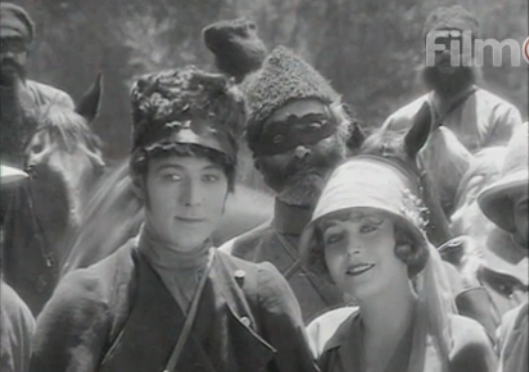Russia has called for an emergency UN Security Council meeting in the latest developments in their burgeoning conflict with Ukraine, which has seen their seizure of key locations in Ukraine’s Crimean Peninsula while making request for Ukrainian soldiers to ‘defect.’
Russia and the Ukraine have long had a complicated relationship. Internal and external politics, as well as religion, have played large roles in conflict, but at the center of many have been the Cossack peoples, and the enduring desire for freedom that is inherent in their name (in Old East Slavic kozak means free man, or a freed man when translated into Arabic).
You might also like: The top 7 Cold War movies
It is not fully clear whether the Cossacks had Turkic roots, but there seems a good argument they were a mix of Turkic, Tatar, Russian, Ukrainian, Poles and Romanians. They formed loose confederations of independent democratically minded communities in and around the lower regions of the Don and Dneiper river valleys dating back to the 1400’s.
Likely out of necessity, they developed a proud, horse-based military tradition, often serving as a mobile and expansive buffer between between empires (Byzantine and Mongols, Poles and Russians, Russians and Turks), they eventually threw their lot in with the Tsarist Regime and assisted them with building an Empire that stretched to the Pacific.
You might also like: Ukraine: 3 new career suggestions for Viktor Yanukovych
When Lenin and the Soviets took over, the Cossacks were at the forefront of the resistance, a resistance that took an unfortunate turn for them when the chose to ally themselves with Nazi Germany during WWII. However, after many years of repression or exile, upon the collapse of the Soviet Union many chose to return and/or revitalize their homeland, which now is divided between Russia and Ukraine. It is nebulous what role or roles they are playing in this current conflict, but it is certain they are involved as there have been reports of Don Cossacks confronting ‘Euromaidan’ protesters.
The Eagle (1925)–which revived Rudolf Valentino’s career–addresses this conflict between peoples in a couple of different ways. Based on the novel Dubrovsky by Alexander Pushkin, it is set during the time of Catherine the Great, this was the Russian Empire’s Golden Age; they were even starting to expand their territory into Alaska and as far south as California. However, as the film elucidates through the charismatic persona and actions of Valentino’s titular lieutenant, as mentioned before much of this success was due to the military prowess of the Cossacks, and when disrespected back home, trouble won’t stop.
You might also like: Non-Stop: Laurence Olivier trumps Liam Neeson in this early airplane action pic
Ironically, The Eagle was released at a time when the Cossacks had recently been fighting ferociously at the side of the Tsarist ‘White Army’ against the Soviets in the Russian Civil War (1917-22) in another unfortunate losing cause. The beginning introduction to this lushly shot silent film explains that Valentino’s ‘Zorro-on the steppe’ nickname of ‘Black Eagle’ was changed to avoid conflict with the Douglas Fairbanks film The Black Pirate (on a side note, Gary Cooper has an un-credited role as one of Dubrovsky’s masked riders) It is quite possible the shift toward titular color-neutrality also reflected a sensibility toward the Civil War defeat, which led to a number of Cossacks fleeing West, which also seems to be referenced in The Eagle’s denouement. Will we be seeing this once again in the near future?
You might also like: Sochi 2014: With Russia’s hockey team failing, the movie Lost in Siberia was never more timely
Watch classic films on the Hollywoodland Channel on FilmOn:
For more channels and movies, go to FilmOn.
Follow TV Mix on Twitter: @tvmixusa
Contact TV Mix: editors@tvmix.com
SOURCE: TVMix.com


